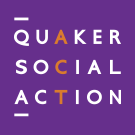Digital is a hot topic for non-profit organisations, so our operations manager looks at the challenges faced when building digital products – and how to overcome them.
Taking the bull by the horns
The challenge of being the charity version of an SME is to run professional, quality services, while not having a multi-department team to specialise.
Inevitably day-to-day demands leave little time for big-picture thinking and major new strategies. For us, digital development was put on the “would like to, but (insert other pressing concern here)” pile.
Thanks to CAST and Comic Relief, that all changed in May 2016.
As a Comic Relief funded organisation we learnt about the CAST Digital Fellowship, and were fortunate to be selected. Along with eight other colleagues from similar size charities, I went through an engaging and practical seven months of fortnightly half-day workshops. We explored key aspects of digital service development; from co-opting lean start-up and Agile approaches, through user-centred design, and the fundamentals of building technology.
It’s a significant shift for QSA. Incorporating the learning means identifying opportunities to widen the reach of our existing projects, and applying digital design concepts to the development of our “offline” work. We are not going to take all our delivery online. However, we see that digital enhances the impact of existing services, enables new ideas to become reality, and how the process, especially Agile, can also improve face to face services.
One of the most valuable aspects of the programme was working with Founders & Coders to get stuck into a real tech build. While I’ve worked on website development, this was mostly from the angle of content presentation. Being able to develop a digital service, however, meant engaging in more intelligent user mapping (and the use of massive amounts of Post-it notes) and gaining greater insight into technical development.
Working with student developers was energising. Their enthusiasm was genuine and contagious, and it was great to know that they could use this work to build their portfolio. Our achievements over a four day mini-’sprint’, and follow up two week sprint, were impressive. From a paper concept at day one, we had a usable minimum viable product at the end – which we will launch soon with our new website.
Doing a build? Some key things I learned were:
- Clarity: Developers interpret what you need functionally, but you are the subject expert. Spend as much time on discovery and definition of the issue as possible before heading off to the developers.
- Don’t be shy: We achieved a lot by phone, email and GitHub, however our face to face meetings were crucial. When possible grab a coffee and sit in front of the screen together.
- Commit and clear your diary: You have to lead. Make time every day to keep on top of the development. If you can’t do this, don’t bother doing a build – you have to be committed to it.
- Get staff on board: Make sure they understand what you are and aren’t doing. The words “digital development” can freak some people out, so put it in the context of better overall service design and improved beneficiary impact.
Keep up to date with digital issues for non-profits. Sign up to the CAST newsletter.
